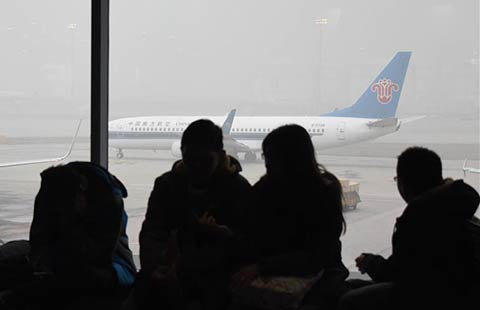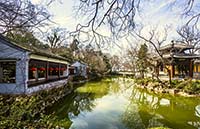China builds more amicable, vibrant neighborhood with Belt and Road Initiative
(Xinhua) Updated: 2015-12-28 16:55BEIJING - With the formal establishment of the Asian Infrastructure Investment Bank on Christmas Day, China's drive to advance the Belt and Road Initiative is wrapping up a year of fruitful progress, particularly in its neighborhood.
The Belt and Road Initiative, which comprises the Silk Road Economic Belt and the 21st Century Maritime Silk Road, was brought up by Chinese President Xi Jinping in 2013, with the aim of building a trade and infrastructure network connecting Asia with Europe and Africa along the ancient Silk Road routes.
The vision, once realized, will directly benefit 4.4 billion people, or 63 percent of the global population.
So far, over 60 countries and international organizations have expressed interest in active involvement in the construction of the Belt and the Road, while a number of major bilateral and multilateral projects have been under way.
As many of China's neighbors are located along the routes, they will be not only primary partners of cooperation, but also major beneficiaries of the initiative, which fully embodies the fundamental principles of Beijing's neighborhood diplomacy: amity, sincerity, mutual benefit and inclusiveness.
A chorus, not a solo
Since the formulation of the Belt and Road Initiative, especially since the beginning of this year, Chinese leaders have been working hard to align the vision with the development strategies of its neighbors, such as the Russia-led Eurasian Economic Union (EEU) and the ASEAN Community, so as to promote common development and win-win cooperation.
Noting that the initiative will not be a solo for China but a real chorus of all countries along the routes, Xi said in March that it will serve the common interests of relevant parties and answer the call of the times for regional and global cooperation.
Countries across the region have reacted positively to China's proposals.
Pakistan, which lifted its ties with China to an all-weather strategic partnership of cooperation during a visit by Xi in April, was among the first to join the framework, pledging to participate in the building of an economic corridor linking its Gwadar Port in the southwest to China's northwestern autonomous region of Xinjiang.
The two countries have agreed to form a "1+4" cooperation structure -- with the China-Pakistan Economic Corridor (CPEC) at the center and the Gwadar Port, transport infrastructure, energy and industrial cooperation being the four key areas -- to achieve win-win results and common development.
Amanullah Khan, chairman of the Pakistan-China Business and Investment Promotion Committee, said that since Xi put forward the Belt and Road Initiative, the region has seen a new wave of economic development.
- Logistics center in Xixian to facilitate commerce
- China Merchants unit creates logistics JV with Lithuania
- Belt and Road Initiative a boost to nuclear industry
- Belt and Road Initiative to help revive Malacca: senior official
- China's Belt and Road Initiative to give new impetus to world economic growth
- AutoNavi launches smart navigation service for tourist attractions
- Stocks plunge by most in one month as financial firms fall
- JD Smart's next generation smart speaker debuts in Beijing
- China fines shipping companies for price fixing
- China's industrial profit decline narrows in November
- Overseas media's take on China's economic blueprint for 2016
- Business leaders remain optimistic despite economic slowdown
- China opens railway route for Beijing-Tianjin-Hebei integration

















